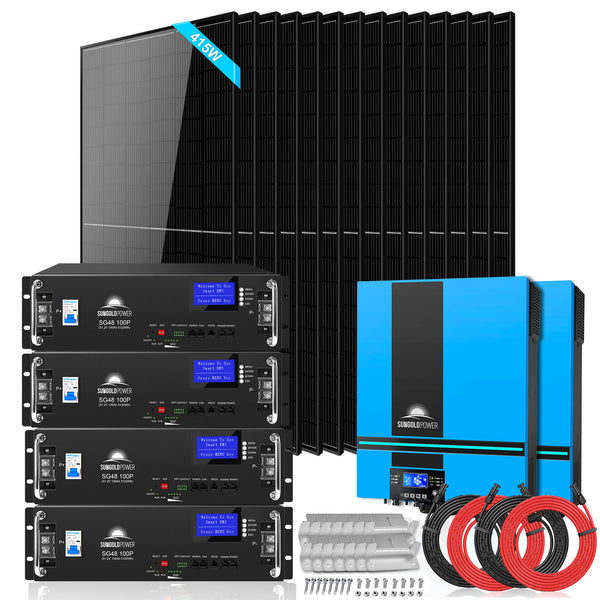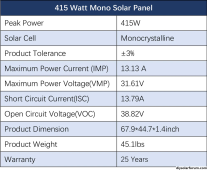Pandemoniumppk
New Member
This is my first system so please go easy on me. My Dad ordered the SGR-13KM Solar Kit from SunGoldPower.com with 14 solar panels and my cousin suggested we hook up the panels in a way that will give us the best of both worlds, high voltage and high amperage. The more I think about the way he explained it, and with all the research I've done, I think it's wrong. Picture 2 rows of 7 panels and numbering them 1-14 starting at the top left, working your way across the top row of 7 and then the first panel on the second row is number 8, all the way to 14. So he says we can take the - from panel 1 and hook to the + of panel 2 to achieve a 48v group in series. The + from panel 1 would go to the inverter and all the other panels would be wired in parallel like this:
the - from p2 to the - of p3
the + from p3 to the + of p4
the - from p3 to the - of p4
the + from p4 to the + of p5 and so on.
Lastly we would end up with the - on p14 being the connection to the inverter. He says this is how we can achieve 48v (peaking around 63v) and 172.9 amps (13.3 amps x 13 panels (1 group of 2) in parallel)
It seems off to hook up panels where most of them are at 24v and only 2 are running at 48v.
My research says that we could do groups of 2 in series, having each group running at 48v and then parallel these all together and achieve 93.1 amps (7 panels x 13.3 amps).
Hopefully I have supplied enough information to answer this one question. Will his way blow up or cause problems? Is my way better and closer to how you would hook up the panels if it was you?
the - from p2 to the - of p3
the + from p3 to the + of p4
the - from p3 to the - of p4
the + from p4 to the + of p5 and so on.
Lastly we would end up with the - on p14 being the connection to the inverter. He says this is how we can achieve 48v (peaking around 63v) and 172.9 amps (13.3 amps x 13 panels (1 group of 2) in parallel)
It seems off to hook up panels where most of them are at 24v and only 2 are running at 48v.
My research says that we could do groups of 2 in series, having each group running at 48v and then parallel these all together and achieve 93.1 amps (7 panels x 13.3 amps).
Hopefully I have supplied enough information to answer this one question. Will his way blow up or cause problems? Is my way better and closer to how you would hook up the panels if it was you?







